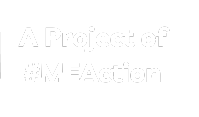- This page was created by volunteers like you!
- Help us make it even better. To learn more about contributing to MEpedia, click here.
- Join the movement
- Visit #MEAction to find support or take action. Donate today to help us improve and expand this project.
- Congratulations!
- MEpedia has got over 30 million views as of August 2022!
Staphylococcus vaccine
The treatment of myalgic encephalomyelitis /chronic fatigue syndrome (ME/CFS) using regular monthly injections of a Staphylococcus toxoid vaccine called Staphypan® was discovered by Professor Carl-Gerhard Gottfries in the early 1960s. At the beginning of his career as a psychiatrist in Sweden, Prof Gottfries was hit with ME/CFS after he caught the Asian flu H2N2 virus during the 1957 flu pandemic. Due to his ongoing fatigue, he suspected he might have a persistent infection, and he started self experimenting with various bacterial vaccines, as these were used to treat bacterial infections in those days before the advent of antibiotics.
By chance Prof Gottfries discovered that the Staphypan Staphylococcus vaccine ameliorated his ME/CFS symptoms, making his fatigue symptoms disappear. But he found that he had to inject this vaccine monthly in order to keep his symptoms suppressed.
Soon, Prof Gottfries started using this vaccine to successfully treat other ME/CFS patients who he saw at the psychiatric unit where he worked. However, the head physician at the psychiatric unit did not like ME/CFS patients coming to the clinic, and asked Prof Gottfries to stop seeing these patients. So Prof Gottfries had to stop treating ME/CFS, but he kept taking the vaccine himself to keep his ME/CFS at bay. Decades later, as Prof Gottfries approached retirement, he felt he should do some research on this vaccine, and so in 1998 he set up up an ME/CFS clinic called the Gottfries Clinic in Sweden with the purpose of treating patients with the Staphypan vaccine, as well as conducting research on the vaccine. The research included two double-blinded clinical trials on Staphypan to treat patients with both ME/CFS and fibromyalgia, which demonstrated that the vaccine was an effective treatment.
Unfortunately in 2005, Berna Biotech, the manufacturer of Staphypan, discontinued this vaccine. Berna Biotech were obliged to update the old artisanal process of manufacturing Staphypan to comply with good manufacturing practice (GMP) regulations. But in spite of some efforts, Berna Biotech realised that it was technically impossible to update the process to comply with GMP. So reluctantly they had to cease production of Staphypan.[1]
Another Staphylococcus toxoid vaccine made by Russian pharmaceutical company Medgamal (the product Staphylococcal Anatoxin Purified Adsorbed) is being used by some ME/CFS patients (see here), but it does not contain exactly the same antigens as Staphypan. However, the 2004 Zachrisson study[2] indicated that the Staphypan antigen most closely tied to the clinical benefit is alpha toxoid, and alpha toxoid is contained in the Russian vaccine. Prof Gottfries tried the Russian vaccine, and found it worked, but was less effective than Staphypan.[3]
Gottfries studies on the Staphypan treatment for ME/CFS[edit | edit source]
The 1998 clinical trial on 28 female patients with both ME/CFS and fibromyalgia found 50% of patients were able to resume half-time or full-time work as a result of the vaccine treatment. The study noted that the vaccine treatment continued to work for these patients after 2 to 6 years.[4]
The 2002 clinical trial on 100 female patients with both ME/CFS and fibromyalgia, it was found 65% of patients responding favourably to the Staphylococcus toxoid vaccine, with 33% of obtaining a 50% reduction in symptoms.[5]
The 2004 study looked at the long-term outcome of the Staphylococcus vaccine treatment for ME/CFS. It noted a high level of safety over 5 years of continuous use of the vaccine. The study points out the beneficial effects of the vaccine last 3 to 4 weeks before re-injection is required.[6]
The 2004 Zachrisson study examined the antibodies in the blood generated by the Staphypan vaccine. The vaccine induced IgG antibodies to several Staphylococcus toxins and cell wall components. The strongest IgG antibody response was directed at Staphylococcus alpha toxin, and to a lesser extent, lipase. A correlation was observed between the strength of the antibody response to alpha toxin and lipase, and the degree of clinical improvement in the patients. The study found that the main antigenic components of Staphypan are: alpha toxin, enterotoxin A, enterotoxin B, toxic shock syndrome toxin 1, cell wall antigens, and lipase.[2]
Potential mechanisms of action of the Staphylococcus vaccine[edit | edit source]
Professor Carl-Gerhard Gottfries does not know the mechanism by which the Staphylococcus toxoid vaccine works to improve ME/CFS. But we know from the 2004 Zachrisson study that for patients given the vaccine, the higher the level of antibodies to alpha toxin induced by the vaccine, the greater the clinical improvement obtained by the patient. So this suggests that the vaccine might ameliorate ME/CFS by neutralising Staphylococcus alpha toxin.
If we examine the effects Staphylococcus alpha toxin has in the body, we see that:
- Alpha toxin is a strong Th17 and IL-17 inducer.[7] Elevated Th17 is linked to viral persistence,[8] and may promote viral replication in acute coxsackievirus B myocarditis.[9] So alpha toxin may promote viral persistence, and thus conceivably neutralising alpha toxin may support viral clearance.
- Alpha toxin binds to the cell surface protein ADAM10.[10] ADAM10 is involved in several aspects of immune regulation, and ADAM10 activation may promote T-cell exhaustion, which makes it harder to clear viruses.
- Alpha toxin increases CD8 T-cell deactivation, so weakens antiviral T-cell responses.[11]
- Russian researchers have shown that the Staphylococcus alpha toxoid from the Russian Medgamal vaccine can correct the immune deficiency caused by coxsackievirus B infection.[12]
- Staphylococcus toxoid vaccine was used as a diabetes treatment as early as the 1930s[13] (type 1 diabetes is linked to coxsackievirus B4 infection).
Learn more[edit | edit source]
- Interview with Professor Carl-Gerhard Gottfries, Part 1: Background and Vaccine — YouTube
- Carl-Gerhard Gottfries: A Swedish Chronic Fatigue Syndrome Vaccine Treatment Success Story — Cort Johnson, Health Rising, 2015
- A forgotten treatment for fibromyalgia/chronic fatigue syndrome? — CFS Remission blog, 2016
See also[edit | edit source]
References[edit | edit source]
- ↑ Nilsson, Erik (September 30, 2014). "Interview with Professor Carl-Gerhard Gottfries, Part 1: Background and Vaccine". YouTube.
- ↑ Jump up to: 2.0 2.1 Zachrisson, O.; Colque-Navarro, P.; Gottfries, C. G.; Regland, B.; M�llby, R. (February 1, 2004). "Immune Modulation with a Staphylococcal Preparation in Fibromyalgia/Chronic Fatigue Syndrome: Relation Between Antibody Levels and Clinical Improvement". European Journal of Clinical Microbiology & Infectious Diseases. 23 (2): 98–105. doi:10.1007/s10096-003-1062-8. ISSN 0934-9723. replacement character in
|last5=at position 2 (help) - ↑ Johnson, Cort (March 30, 2023). "Adam's BCG Vaccination Chronic Fatigue Syndrome (ME/CFS) Recovery Story - Health Rising". Health Rising. Retrieved June 15, 2025.
- ↑ Andersson, M.; Bagby, J.R.; Dyrehag, L.‐E.; Gottfries, C.‐G. (1998-06). "Effects of staphylococcus toxoid vaccine on pain and fatigue in patients with fibromyalgia/chronic fatigue syndrome". European Journal of Pain. 2 (2): 133–142. doi:10.1016/s1090-3801(98)90006-4. ISSN 1090-3801. Check date values in:
|date=(help) - ↑ Zachrisson, Olof; Regland, Björn; Jahreskog, Marianne; Jonsson, Michael; Kron, Margareta; Gottfries, Carl‐Gerhard (2002-12). "Treatment with staphylococcus toxoid in fibromyalgia/chronic fatigue syndrome—a randomised controlled trial". European Journal of Pain. 6 (6): 455–466. doi:10.1016/s1090-3801(02)00044-7. ISSN 1090-3801. Check date values in:
|date=(help) - ↑ "Long-Term Treatment with a Staphylococcus Toxoid Vaccine in Patients with Fibromyalgia and Chronic Fatigue Syndrome". Journal Of Chronic Fatigue Syndrome. 13 (4): 29–40. 2006.
- ↑ Niebuhr, Margarete; Gathmann, Merle; Scharonow, Helena; Mamerow, Diana; Mommert, Susanne; Balaji, Hari; Werfel, Thomas (2011-04). "Staphylococcal Alpha-Toxin Is a Strong Inducer of Interleukin-17 in Humans". Infection and Immunity. 79 (4): 1615–1622. doi:10.1128/IAI.00958-10. ISSN 0019-9567. Check date values in:
|date=(help) - ↑ Hou, Wanqiu; Kang, Hyun Seok; Kim, Byung S. (February 9, 2009). "Th17 cells enhance viral persistence and inhibit T cell cytotoxicity in a model of chronic virus infection". Journal of Experimental Medicine. 206 (2): 313–328. doi:10.1084/jem.20082030. ISSN 1540-9538.
- ↑ Xie, Yuquan; Chen, Ruizhen; Zhang, Xian; Chen, Ping; Liu, Xujie; Xie, Yeqing; Yu, Yong; Yang, Yingzhen; Zou, Yunzeng; Ge, Junbo; Chen, Haozhu (2011-12). "The role of Th17 cells and regulatory T cells in Coxsackievirus B3-induced myocarditis". Virology. 421 (1): 78–84. doi:10.1016/j.virol.2011.09.006. ISSN 0042-6822. Check date values in:
|date=(help) - ↑ Berube, Bryan; Wardenburg, Juliane (June 13, 2013). "Staphylococcus aureus α-Toxin: Nearly a Century of Intrigue". Toxins. 5 (6): 1140–1166. doi:10.3390/toxins5061140. ISSN 2072-6651.
- ↑ Blümel, Edda; Munir Ahmad, Shamaila; Nastasi, Claudia; Willerslev-Olsen, Andreas; Gluud, Maria; Fredholm, Simon; Hu, Tengpeng; Surewaard, Bas G. J.; Lindahl, Lise M.; Fogh, Hanne; Koralov, Sergei B. (2020-01). "Staphylococcus aureus alpha-toxin inhibits CD8 + T cell-mediated killing of cancer cells in cutaneous T-cell lymphoma". OncoImmunology. 9 (1). doi:10.1080/2162402X.2020.1751561. ISSN 2162-402X. line feed character in
|title=at position 29 (help); Check date values in:|date=(help) - ↑ "[Correction of immune response using purified staphylococcal toxoid and likopid in the secondary immunodeficiency induced by Coxsackie virus B3]". Zhurnal mikrobiologii, epidemiologii i immunobiologii (5). 2001-09. ISSN 0372-9311. Check date values in:
|date=(help) - ↑ Wale, R S; Madders, Kate (1936 Aug). "Staphylococcal Toxoid in the Treatment of Diabetes". British Journal of Experimental Pathology. 17 (4). Check date values in:
|date=(help)
Cite error: <ref> tag with name "zachrisson2002" defined in <references> is not used in prior text.
Cite error: <ref> tag with name "zachrisson2004" defined in <references> is not used in prior text.

